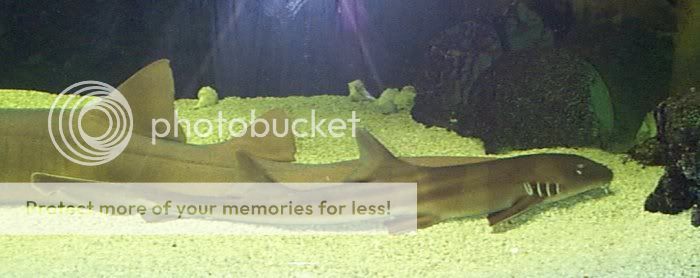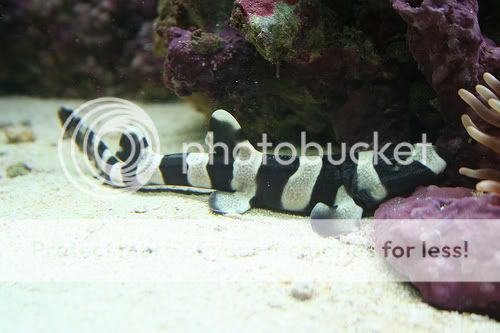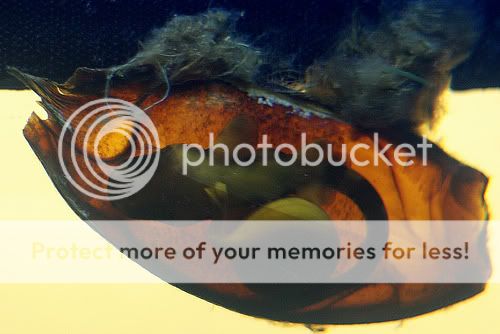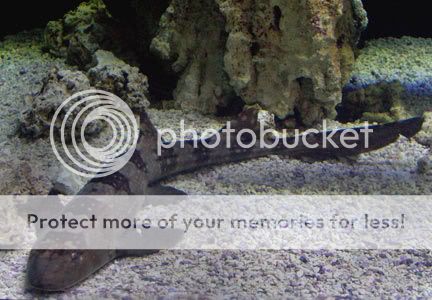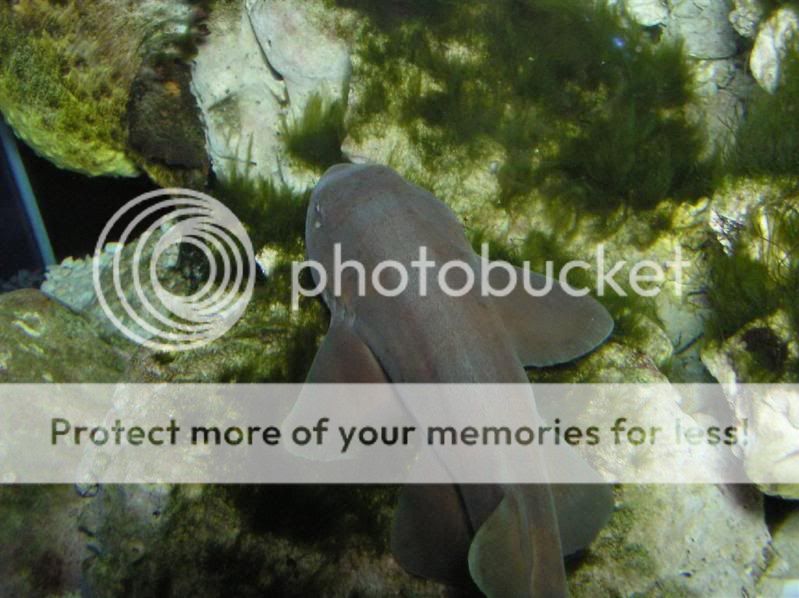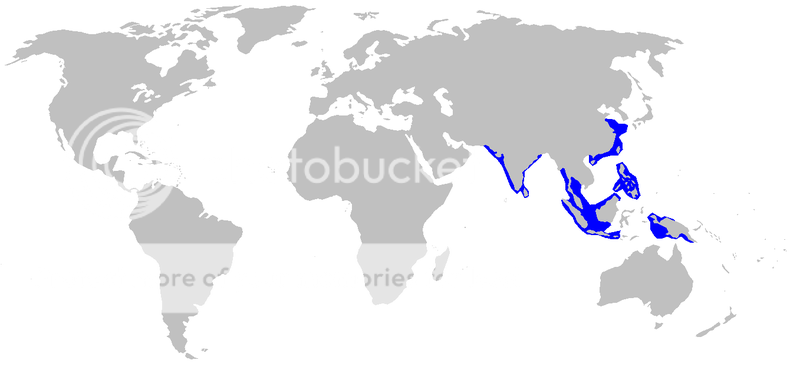Will soon contain profiles and images of the following;
*Brown Banded Bamboo Sharks, Chiloscyllium punctatum
*White Spotted Bamboo Sharks, Chiloscyllium plagiosum
*Grey Bamboo Shark, Chiloscyllium griseum
*Hasselt's (Indonesian) Bamboo Shark, Chiloscyllium hasseltii
*Slender bamboo shark, Chiloscyllium indicum
*Horn Shark, Heterodontus francisci
*Crested (bullhead) Horn Shark, Heterodontus galeatus
*Japanese Bullhead Shark, Heterodontus japonicus
*Mexican Horn Shark, Heterodontus mexicanus
*Port Jackson Shark, Heterodontus portusjacksoni
*Whitespotted bullhead shark, Heterodontus ramalheira
*Zebra bullhead shark, Heterodontus zebra
*Spiny Dogfish Shark, Squalus acanthias
*Epaulette shark, Hemiscyllium ocellatum
*Speckled carpetshark, Hemiscyllium trispeculare
*Indonesian speckled carpetshark, Hemiscyllium freycineti
*Tasselled wobbegong, Eucrossorhinus dasypogon
*Ornate wobbegong, Orectolobus ornatus
*Dwarf spotted wobbegong, Orectolobus parvimaculatus
*Japanese wobbegong, Orectolobus japonicus
*Cobbler wobbegong, Sutorectus tentaculatus
*Leopard Shark, Triakis semifasciata
*Gummy Shark, Mustelus antarcticus
*Atlantic Sharpnose shark, Rhizoprionodon terraenovae
***For Catsharks, feel free to PM me on profiles you'd like to see. I'm not about to do them all. LOL.
Even if a species is not available to all, depending on their local and federal laws, it's ok. MFK is an international site, so if it's one which is legal to own (even if only in parts of the world), and is one of which is known to be kept by private aquarists, PM me and I will see what I can do.
***If you would like to contribute to any of these profiles, PM me and let me know which one you are interested in working on. I will flag it on my list, and work with you in creating the profile. Once completed, you will send me a full version, of which I will check for accuracy, images and overall information provided, and then add it into this database thread. Do understand however, that I may change, add onto, remove, or re-arrange some of your information to make it easier for the reader, more accurate and complete.
----------------------------------------------------------------------
Sharks At Home:
Shark Profile Database
Sharks are perhaps the most wanted and, when owned, prized fish, that a private aquarist can have. Their elegance appeals to many, along with the respect they demand in whole. Over the years, shark keeping in the private sector has become increasingly popular. And while one would like to think that anyone taking on the challenge and responsibility of keeping a shark at home would be educated, financially blessed, and responsible... that is far too often not the case.
While sharks may just be the "Crem Del Le Crem" to the vast majority of private saltwater aquarists, they are also an animal which is poorly understood by that same vast majority. Lack of education, coupled with unrealistic and downright selfish attitudes towards keeping these animals has led to a demand for them in the aquarium trade, and sadly, mortalities reaching epidemic proportions.
While it's no wonder that your serious, and advanced saltwater aquarist would want to own a shark, it's mindblowing that so many of them would fail to research and plan ahead, and then responsibly provide for these animals once in their possession.
But this isn't an issue which blame rests soley on the consumer. Aquatic retailors are just as much to blame, if not more. For afterall, they are the ones placing these animals into the hands of the innexperienced, uneducated, and unprepared individuals all to make a buck.
We can't control the retail aspect of all things however, and until state and federal laws crack those whips, it's up to us - the "customers" to make the right decisions, and not offer further support to immoral and unethical businesses.
In this thread you will see a broad range of shark species which are most suitable for private captivity. Not all of them are ones which most, or even a great handful would be able to care for, so you should not assume that just because it's listed, you yourself could even come close to responsibly owning one of these animals.
This thread is not meant to encourage individuals to keep sharks, but rather, to educate the one's who intend to do it anyway, and to hopefully enlighten them as to the true commitment they are taking on, and the long-term dedication and responsibility that these animals will require.
Below you will note a "Can I do it" checklist, which will highlight the very basic things you would need to consider and be able to answer YES to, in order to consider moving forward in owning a shark. If you cannot honestly answer "yes" to each question, then at this point, you are not qualified to house sharks.
CAN I DO IT?
Basic Check-list For All Shark Keepers
This list is NOT all inclusive, but should serve as a basic reference
1) Can I correctly identify all major parts of basic shark anatomy?
2) Do I understand shark biology?
3) Do I have a firm grasp on what sharks require;
- Their Dietary Needs
- Their Mobility Requirements
- Their Social Adaptations and Behavioral Patterns
- Their Environmental Sensitivities
4) Can I provide the necessary space for a shark right now?
5) Can I devote 20+ hours every week towards maintenance of their housing;
- Filters, Pumps and Internal Circulatory and Regulatory Parts
- Water Parameters
- Substrates and Decor
- Electrical Testing, and General Upkeep of vacinity
*Observation;
- Swim Pattens
- Social Interactions
- Posturing
- Breathing Patterns
- Physical Appearances
*Feeding;
- Preparing
- Offering Foods
- Monitoring Consumption & Digestion
- Administering Supplements
- Clean-up
6) Can I afford a water bill easily 5x's what I pay now - every month?
7) Can I afford an electricity bill easily 5x's what I pay now - every month?
8) Can I afford to purchase high quality fresh seafood in bulk 1-2 times per week, year round?
9) Can I afford the equipment I will need to set up a holding suitable for a shark?
10) Do I even know what I need as far as equipment goes?
11) Am I going to be able to house, feed and care for this shark for the next 20 years?
Though this list is not to be seen as an all-inclusive check list, it offers the very basic considerations one needs to have before they can move forward in becomming a shark keeper. If you cannot answer YES to each and every one of these questions, in addition to knowing off the top of your head what is required - as in question 10, then owning a shark isn't something you are prepared to do at this point. Taking the time to research and educate yourself on these amazing animals, planning well in advance and really taking a responsible approach; making provisions to comfortably house this animal long term will not only provide you with the confidence, know-how and preparedness to take on such a challenge, but will also help to ensure that you never become part of the problem surrounding unethical treatment and irresponsible keeping of our ocean's apex predators.
<<Under Construction>>
*Brown Banded Bamboo Sharks, Chiloscyllium punctatum
*White Spotted Bamboo Sharks, Chiloscyllium plagiosum
*Grey Bamboo Shark, Chiloscyllium griseum
*Hasselt's (Indonesian) Bamboo Shark, Chiloscyllium hasseltii
*Slender bamboo shark, Chiloscyllium indicum
*Horn Shark, Heterodontus francisci
*Crested (bullhead) Horn Shark, Heterodontus galeatus
*Japanese Bullhead Shark, Heterodontus japonicus
*Mexican Horn Shark, Heterodontus mexicanus
*Port Jackson Shark, Heterodontus portusjacksoni
*Whitespotted bullhead shark, Heterodontus ramalheira
*Zebra bullhead shark, Heterodontus zebra
*Spiny Dogfish Shark, Squalus acanthias
*Epaulette shark, Hemiscyllium ocellatum
*Speckled carpetshark, Hemiscyllium trispeculare
*Indonesian speckled carpetshark, Hemiscyllium freycineti
*Tasselled wobbegong, Eucrossorhinus dasypogon
*Ornate wobbegong, Orectolobus ornatus
*Dwarf spotted wobbegong, Orectolobus parvimaculatus
*Japanese wobbegong, Orectolobus japonicus
*Cobbler wobbegong, Sutorectus tentaculatus
*Leopard Shark, Triakis semifasciata
*Gummy Shark, Mustelus antarcticus
*Atlantic Sharpnose shark, Rhizoprionodon terraenovae
***For Catsharks, feel free to PM me on profiles you'd like to see. I'm not about to do them all. LOL.
>>>>Note: I will only do profiles for this thread on sharks which are either common for private aquarists - or - are one's which can be reasonably obtained and adequately housed by advanced private aquarists. This means I will NOT cover sharks such as Tigers, Makos, Whites, Nurses - (even though yes, some people keep them, it's not one I am even going to advertise right now), Bulls, Hammerheads, etc. . .
If you would like a profile done on a qualifying species, and do not see it listed above (because no, I didn't list them all), then please PM me.Even if a species is not available to all, depending on their local and federal laws, it's ok. MFK is an international site, so if it's one which is legal to own (even if only in parts of the world), and is one of which is known to be kept by private aquarists, PM me and I will see what I can do.
***If you would like to contribute to any of these profiles, PM me and let me know which one you are interested in working on. I will flag it on my list, and work with you in creating the profile. Once completed, you will send me a full version, of which I will check for accuracy, images and overall information provided, and then add it into this database thread. Do understand however, that I may change, add onto, remove, or re-arrange some of your information to make it easier for the reader, more accurate and complete.
----------------------------------------------------------------------
Sharks At Home:
Shark Profile Database
Sharks are perhaps the most wanted and, when owned, prized fish, that a private aquarist can have. Their elegance appeals to many, along with the respect they demand in whole. Over the years, shark keeping in the private sector has become increasingly popular. And while one would like to think that anyone taking on the challenge and responsibility of keeping a shark at home would be educated, financially blessed, and responsible... that is far too often not the case.
While sharks may just be the "Crem Del Le Crem" to the vast majority of private saltwater aquarists, they are also an animal which is poorly understood by that same vast majority. Lack of education, coupled with unrealistic and downright selfish attitudes towards keeping these animals has led to a demand for them in the aquarium trade, and sadly, mortalities reaching epidemic proportions.
While it's no wonder that your serious, and advanced saltwater aquarist would want to own a shark, it's mindblowing that so many of them would fail to research and plan ahead, and then responsibly provide for these animals once in their possession.
But this isn't an issue which blame rests soley on the consumer. Aquatic retailors are just as much to blame, if not more. For afterall, they are the ones placing these animals into the hands of the innexperienced, uneducated, and unprepared individuals all to make a buck.
We can't control the retail aspect of all things however, and until state and federal laws crack those whips, it's up to us - the "customers" to make the right decisions, and not offer further support to immoral and unethical businesses.
In this thread you will see a broad range of shark species which are most suitable for private captivity. Not all of them are ones which most, or even a great handful would be able to care for, so you should not assume that just because it's listed, you yourself could even come close to responsibly owning one of these animals.
This thread is not meant to encourage individuals to keep sharks, but rather, to educate the one's who intend to do it anyway, and to hopefully enlighten them as to the true commitment they are taking on, and the long-term dedication and responsibility that these animals will require.
Below you will note a "Can I do it" checklist, which will highlight the very basic things you would need to consider and be able to answer YES to, in order to consider moving forward in owning a shark. If you cannot honestly answer "yes" to each question, then at this point, you are not qualified to house sharks.
CAN I DO IT?
Basic Check-list For All Shark Keepers
This list is NOT all inclusive, but should serve as a basic reference
1) Can I correctly identify all major parts of basic shark anatomy?
2) Do I understand shark biology?
3) Do I have a firm grasp on what sharks require;
- Their Dietary Needs
- Their Mobility Requirements
- Their Social Adaptations and Behavioral Patterns
- Their Environmental Sensitivities
4) Can I provide the necessary space for a shark right now?
5) Can I devote 20+ hours every week towards maintenance of their housing;
- Filters, Pumps and Internal Circulatory and Regulatory Parts
- Water Parameters
- Substrates and Decor
- Electrical Testing, and General Upkeep of vacinity
*Observation;
- Swim Pattens
- Social Interactions
- Posturing
- Breathing Patterns
- Physical Appearances
*Feeding;
- Preparing
- Offering Foods
- Monitoring Consumption & Digestion
- Administering Supplements
- Clean-up
6) Can I afford a water bill easily 5x's what I pay now - every month?
7) Can I afford an electricity bill easily 5x's what I pay now - every month?
8) Can I afford to purchase high quality fresh seafood in bulk 1-2 times per week, year round?
9) Can I afford the equipment I will need to set up a holding suitable for a shark?
10) Do I even know what I need as far as equipment goes?
11) Am I going to be able to house, feed and care for this shark for the next 20 years?
Though this list is not to be seen as an all-inclusive check list, it offers the very basic considerations one needs to have before they can move forward in becomming a shark keeper. If you cannot answer YES to each and every one of these questions, in addition to knowing off the top of your head what is required - as in question 10, then owning a shark isn't something you are prepared to do at this point. Taking the time to research and educate yourself on these amazing animals, planning well in advance and really taking a responsible approach; making provisions to comfortably house this animal long term will not only provide you with the confidence, know-how and preparedness to take on such a challenge, but will also help to ensure that you never become part of the problem surrounding unethical treatment and irresponsible keeping of our ocean's apex predators.
<<Under Construction>>



